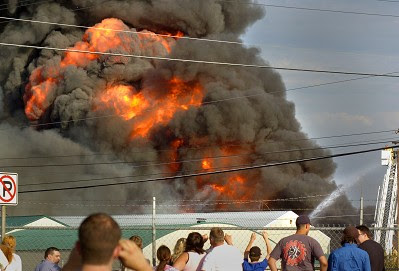
.jpg)
At some point today a firefighter in America will fight a fire involving a structure a with truss roof. Except for departments living in the dark ages, the dangers of truss failures is all too apparent. NIOSH investigates firefighter fatalities and on their site is an excellent pamphlet detailing the dangers of truss construction as it relates to firefighting. This information is FREE.
Below are some of their recommendations:
Venting the roof using proper safety precautions
Opening concealed spaces quickly to determine fire location
Being constantly aware of the time the fire has been burning
Providing continuous feedback on changing conditions to the incident commander
Watching for signs of structural deterioration
Employing a defensive strategy once burning of truss members is identified
Broadly disseminating new tactical safety concepts learned at each fire
Conduct pre-incident planning and inspections to identify structures that contain truss construction.
Develop and implement standard operating procedures (SOPs) to combat fires safely in buildings with truss construction.
Ensure that the incident commander conducts an initial size-up and risk assessment of the incident scene before beginning interior fire-fighting operations.
Consider using a thermal imaging camera as part of the size-up operation to aid in locating fires in concealed spaces.
Ensure that fire fighters performing fire-fighting operations under or above trusses are evacuated as soon as it is determined that the trusses are exposed to fire (not according to a time limit). (text courtesy of firefighterhourly.com)

















